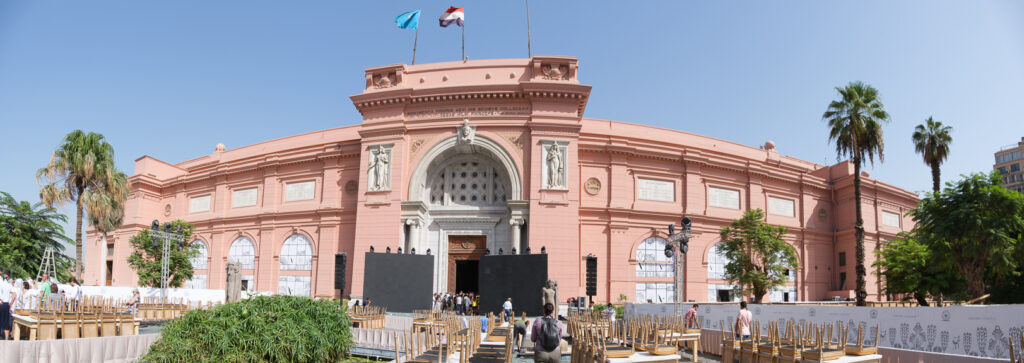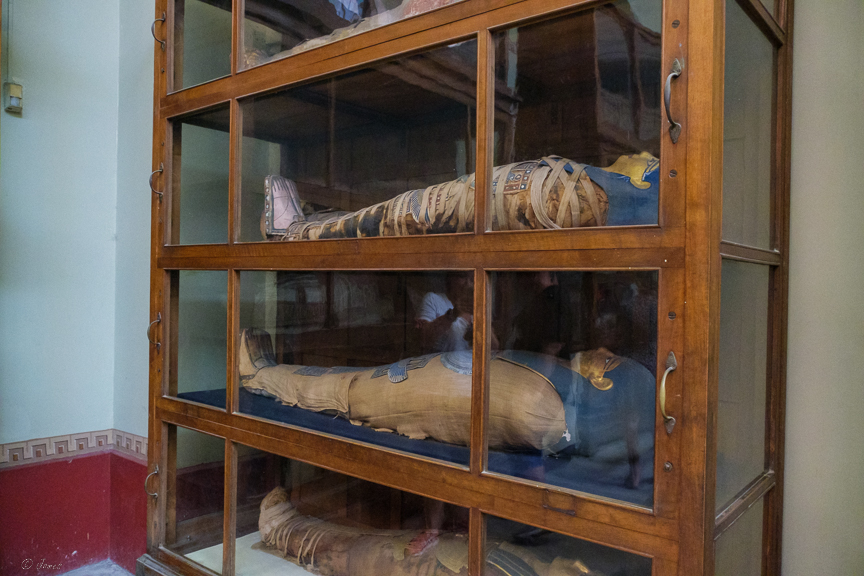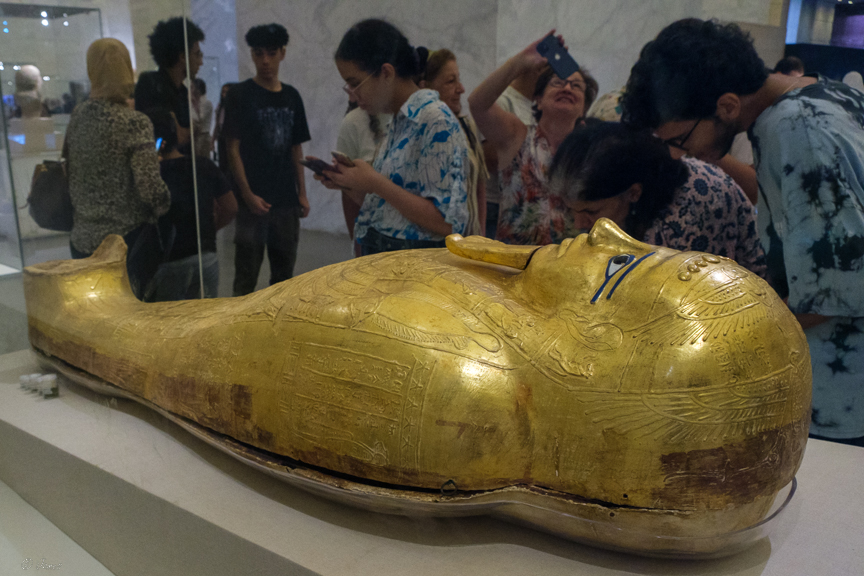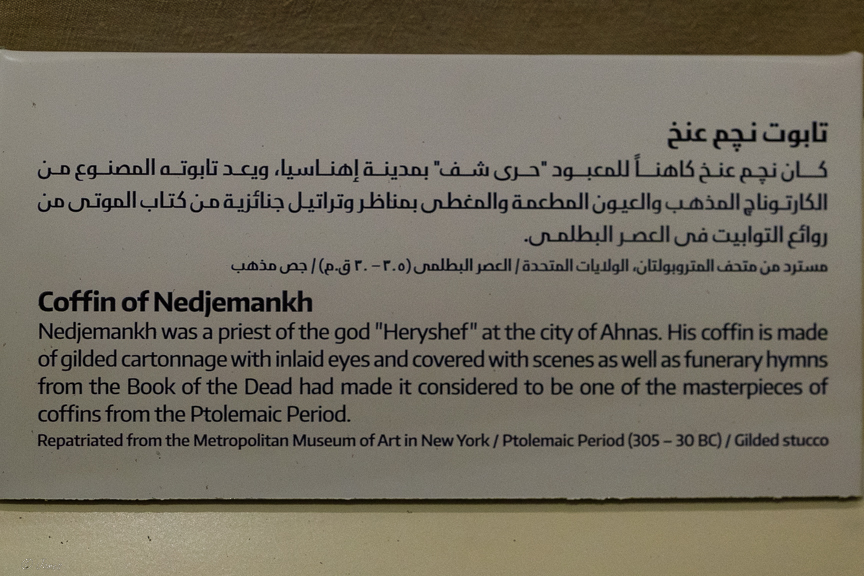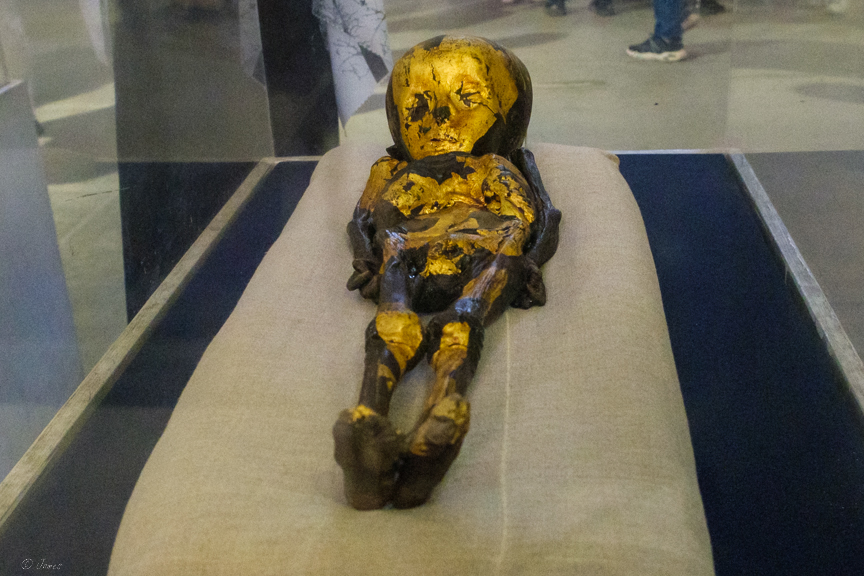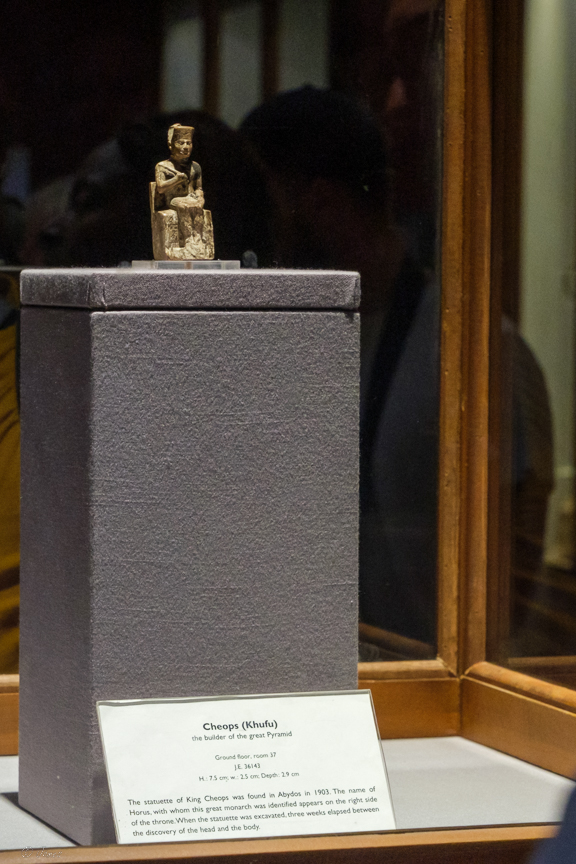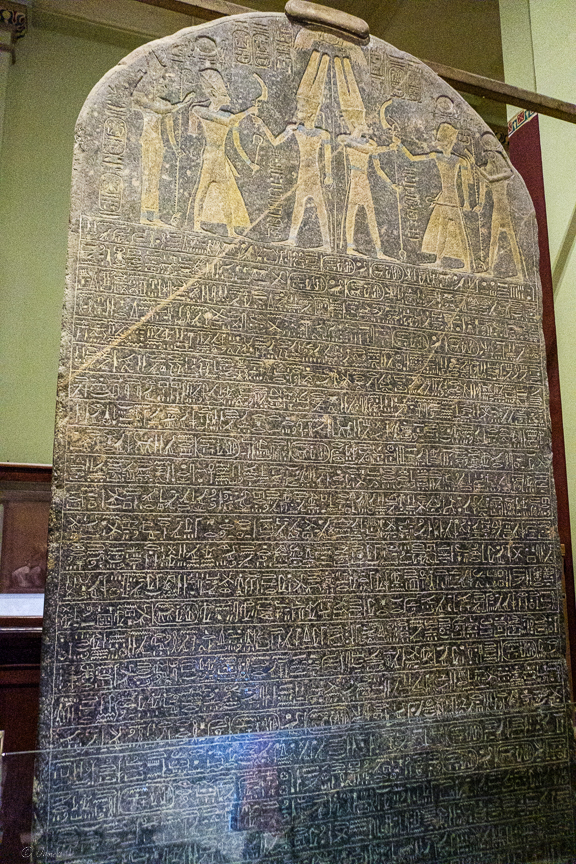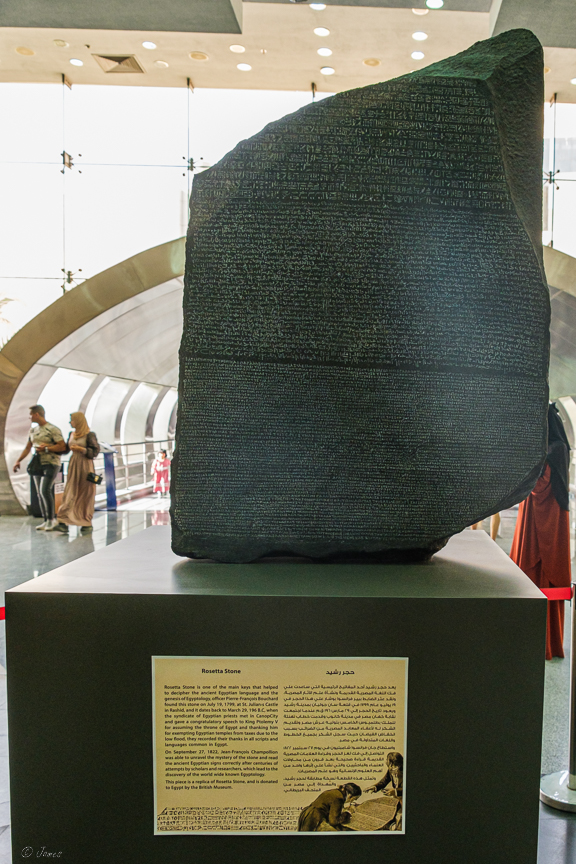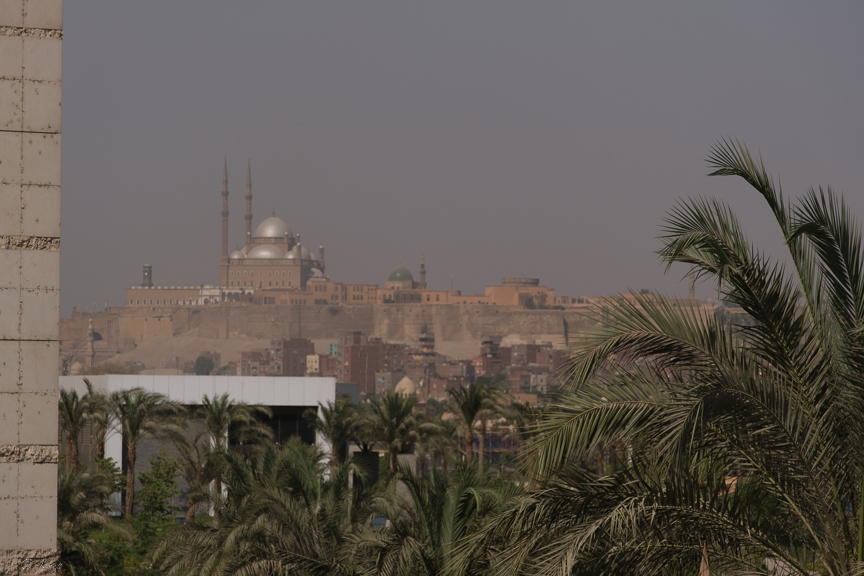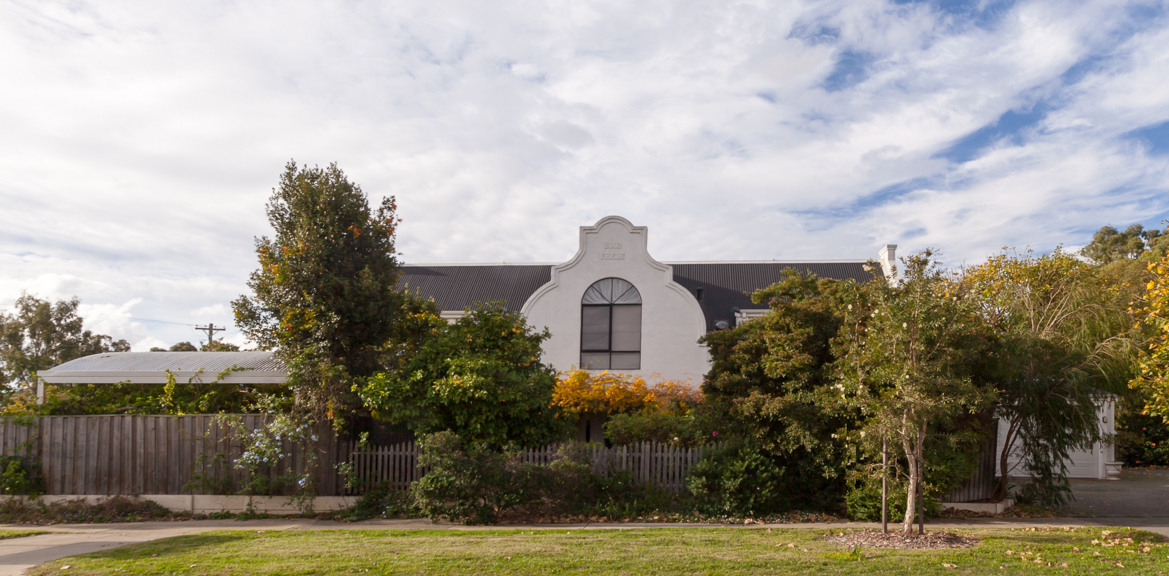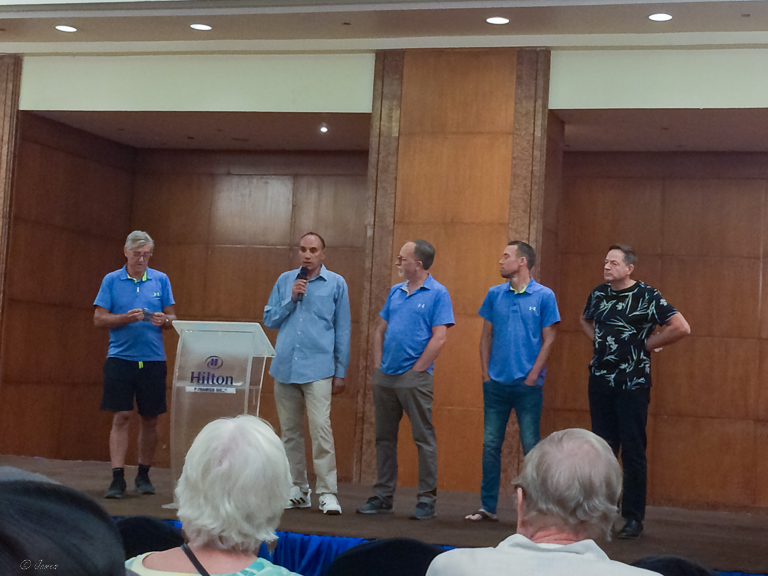On this our last day we, together with the rest of Cairo as it was a free day, visited the old Egyptian Museum at Tahiri Square, established in 1902 by the French. It holds items for four periods of Egyptian history from the archaic period through the Roman and Byzantine periods up to 640BC. The museum has two floors. The ground floor containing 51 rooms, the second floor 56; there was no time to go into all of those. The oldest artefacts belong to Menes dated 3100 BC. The only surviving statuette of Khufu who built the great pyramid is very tiny. The museum holds 160,000 items on display and further hundred thousand in storage but have removed the important mummies to the Museum of Civilisation, as well as many other item to the new Grand Museum which is to be opened in November. An interesting item is the Merneptah Stele (1200BC) on which the last three of the 28 lines deal with a separate campaign in Canaan, the earliest textual reference to Israel. The most famous display is of course that of Tutankhamun treasures including the famous gold mask in a special dark room – no photography. He was placed in a coffin, in a larger one.
After lunch we drove to the modern Museum of Civilisation which has the mummy‘s room in the dark basement to mimic a tomb. Most of the many famous pharaohs of Egypt are here; Ramses 2, 3, 4, 5, 6 and 13, Nefertiti, Hatshepsut (who drew Moses from the river), Thutmose 3 (who oppressed Moses), Amenhotep 2 (possible Exodus pharaoh). Entry was restricted as the room became too hot; those wanting to enter pushed when we were given access so I nearly fell. The entry floor displays are in a sequence from ‘pre-history’ to the Islamic time (now).
Some of us opted to return to the hotel, very tired. The Old Museum was not air-conditioned, the day very hot. And it was 4pm. Others went on to the cotton factory (Peigi bought a scarf for Maria on my behalf) and a bazaar.
After dinner we met in the large room for a farewell – emotional for many.
